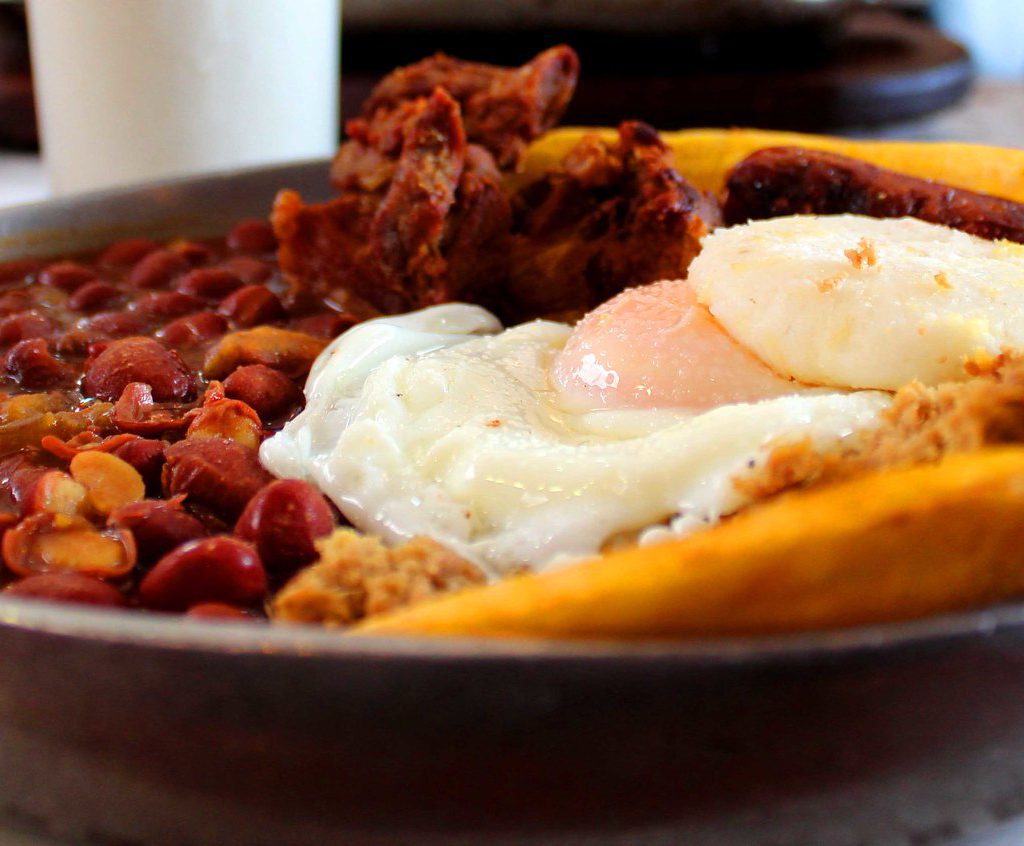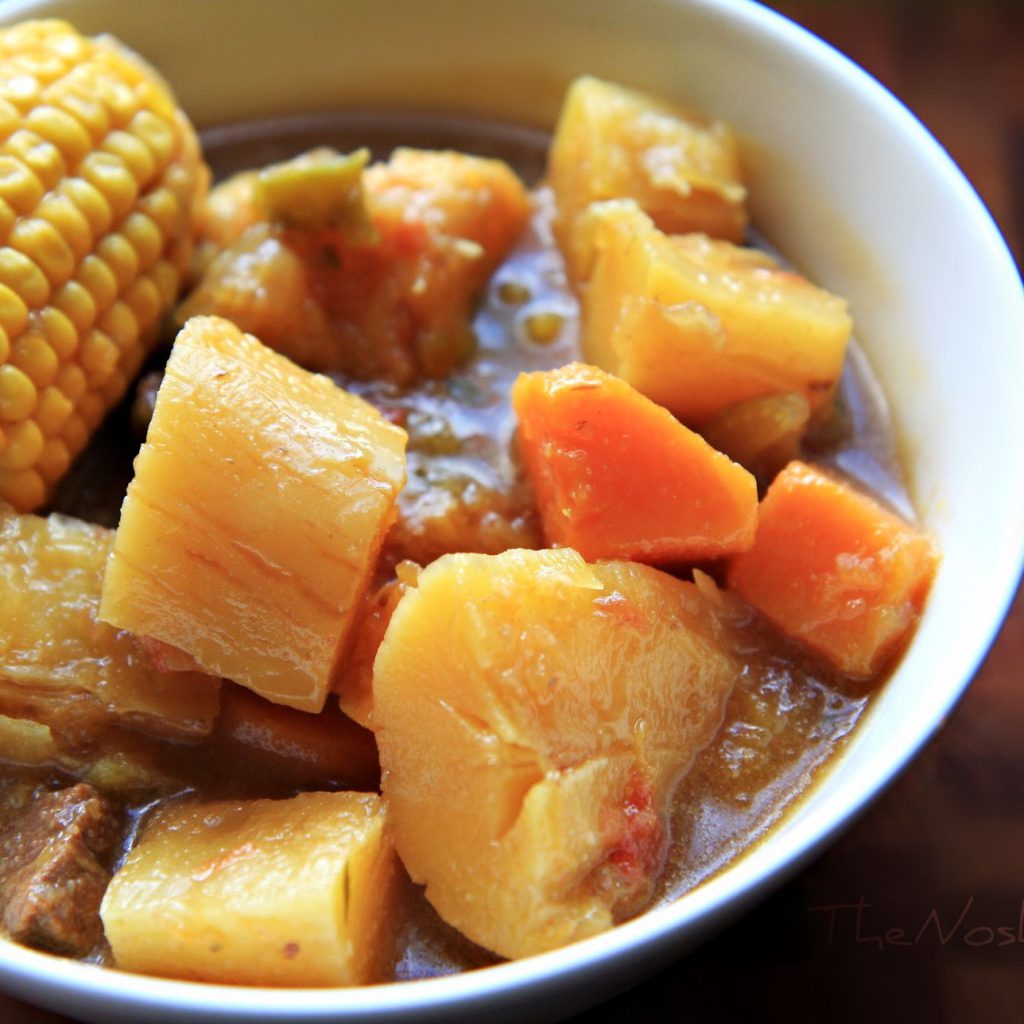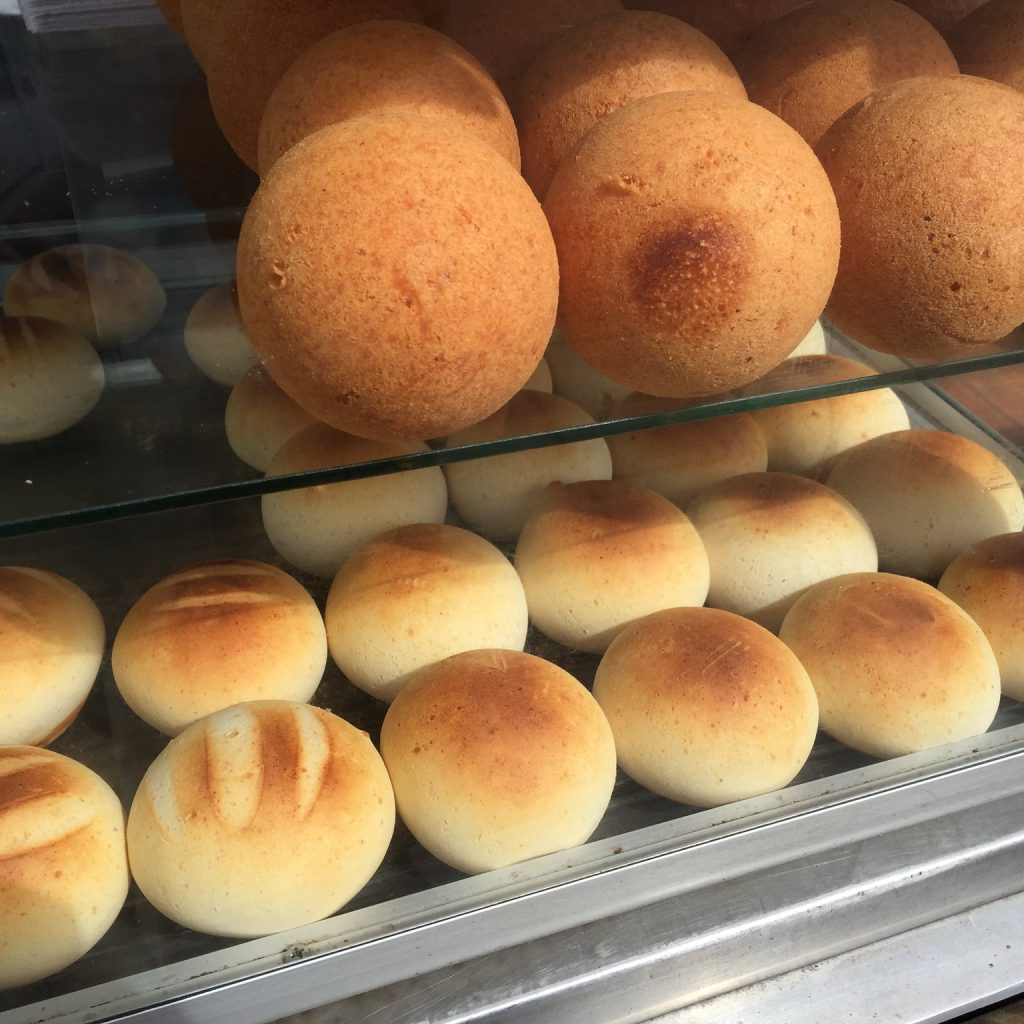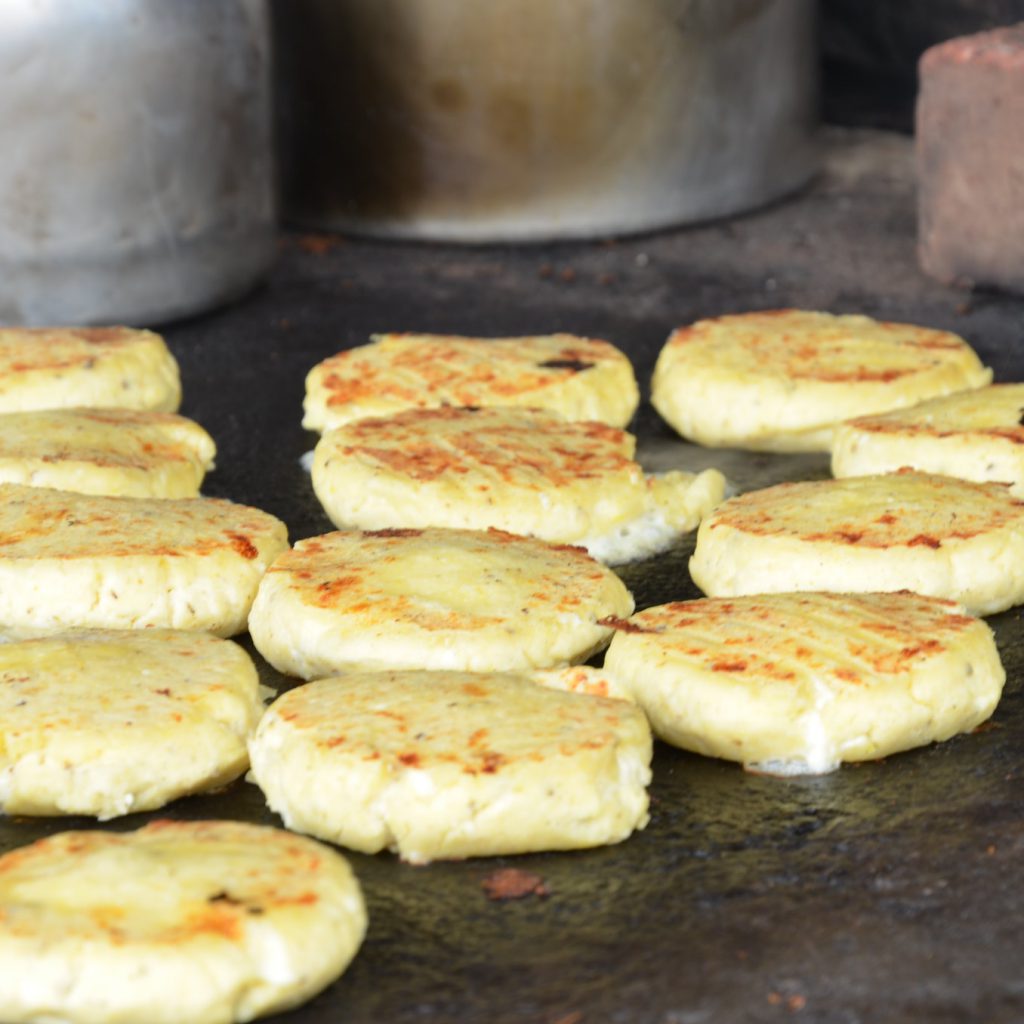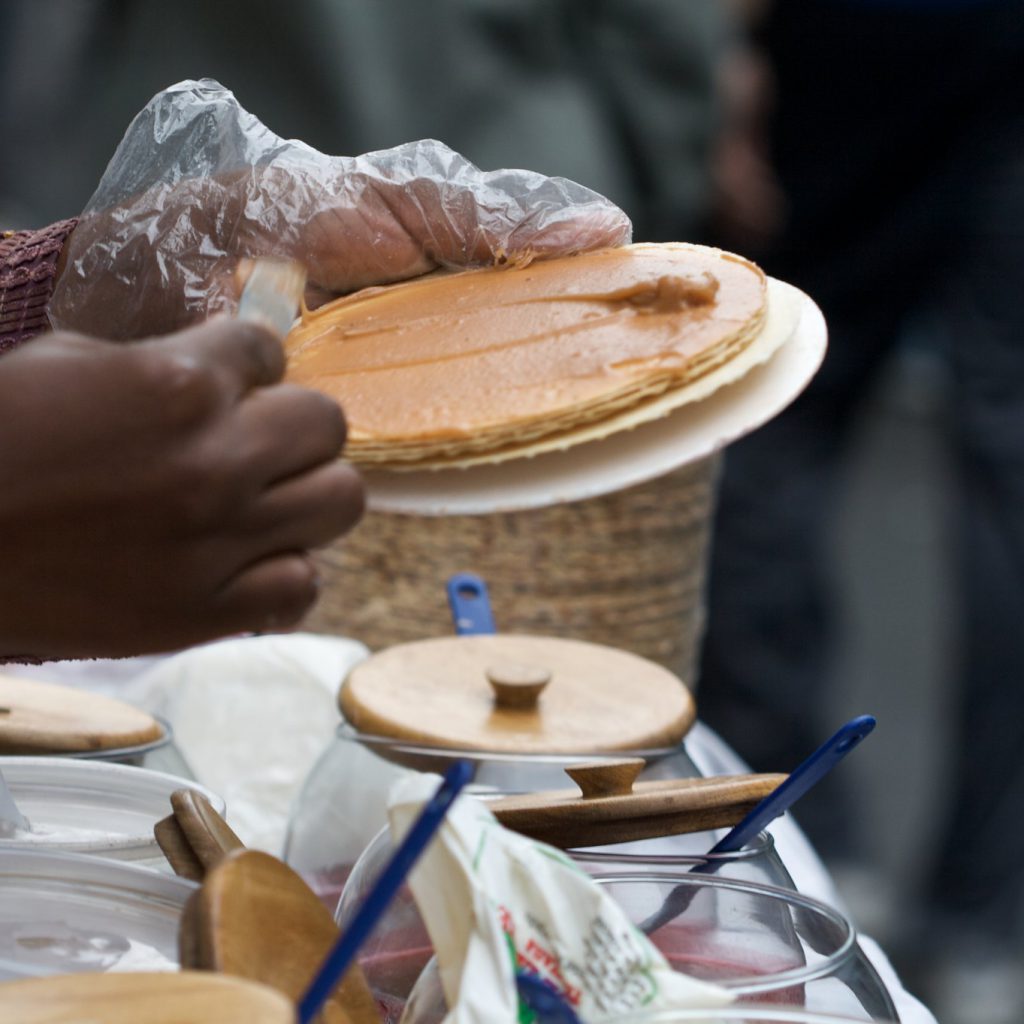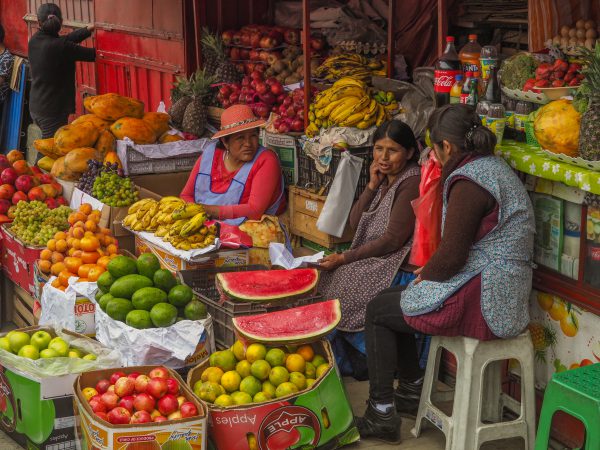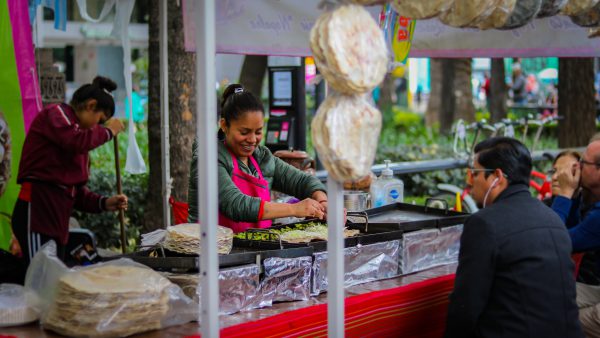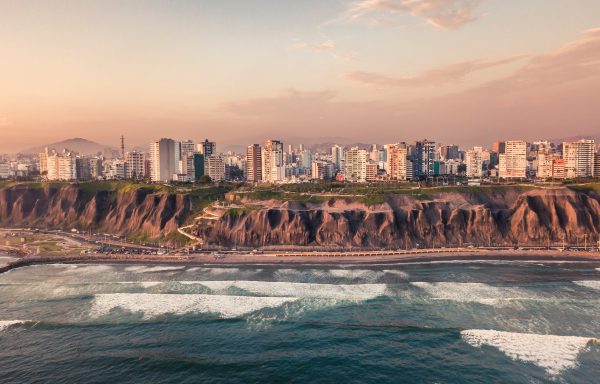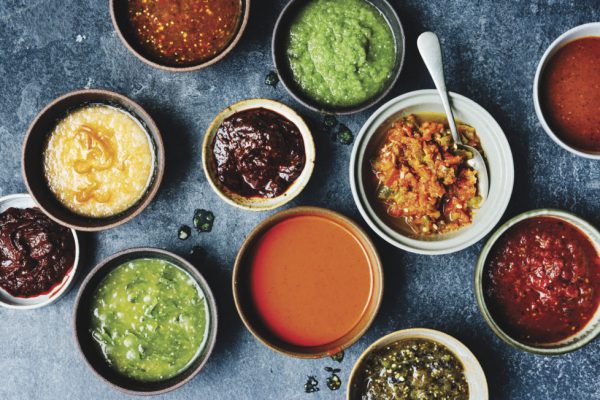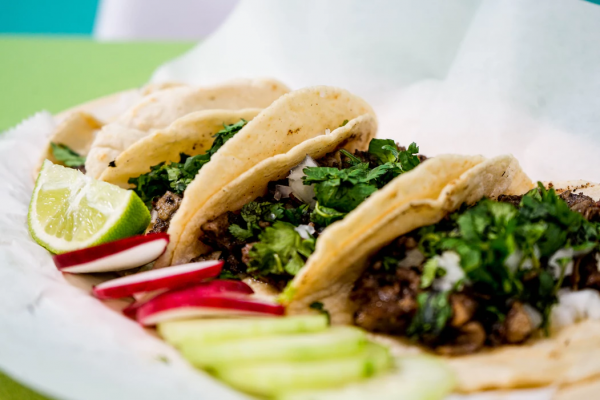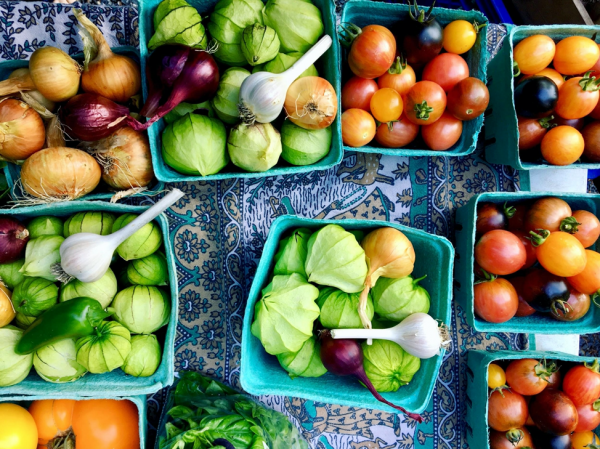Last Updated on June 27, 2022
With its quaint colonial towns, fascinating big cities, tropical resorts, mountains, and oceans, Colombia is one of South America’s best-kept secrets. Its diverse cultures, dynamic landscapes, and history full of stories make Colombia an alluring place to explore and even more dynamic cuisine. Colombia is a country privileged in terms of nature, and it generously shares this privilege with travelers. Thanks to the diverse climate zones in the country, a variety of crops can grow in Colombia at the same time. Unsurprisingly then, Colombian cuisine is based on an array of fresh and organic vegetables. And when you add a good dose of vibrant local culture to this natural wealth, you get a cuisine full of colorful and delicious dishes. Check out our list of must-try dishes when visiting Colombia!
Colombian Culture: A Melting Pot
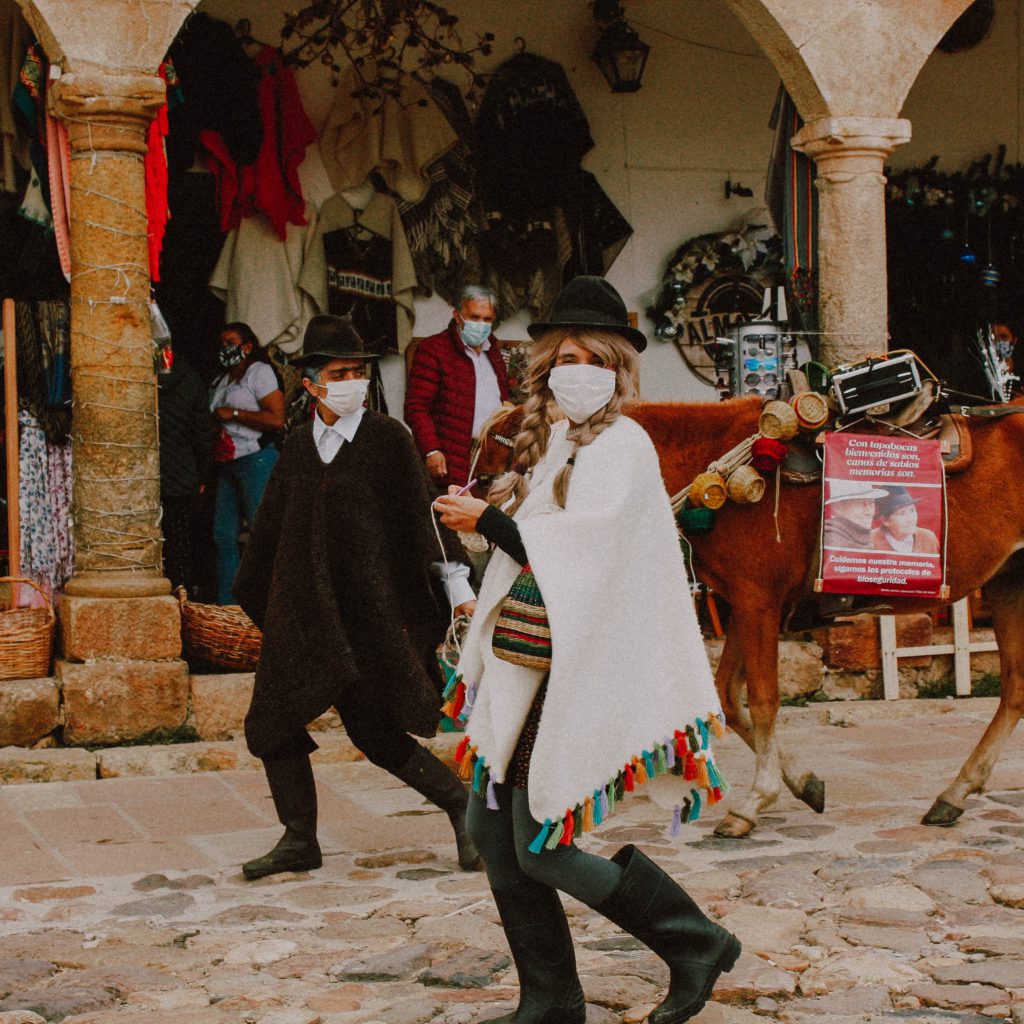
Unsurprisingly, a good deal of the local culture developed under a prominent Spanish influence since colonization radically changed the way people lived their lives. Plus, since Colombia played a big role in the triangular trade — the sailing route taken by slave traders — the heritage of the African slaves brought to the region to work on plantations deeply permeates the culture.
But the presence of these influences doesn’t wipe away the indigenous culture in Colombia. Quite the opposite! Collectively, they’ve created one of the most exotic and authentic cultures and the home to an equally amazing cuisine.
Traditional Colombian Dishes
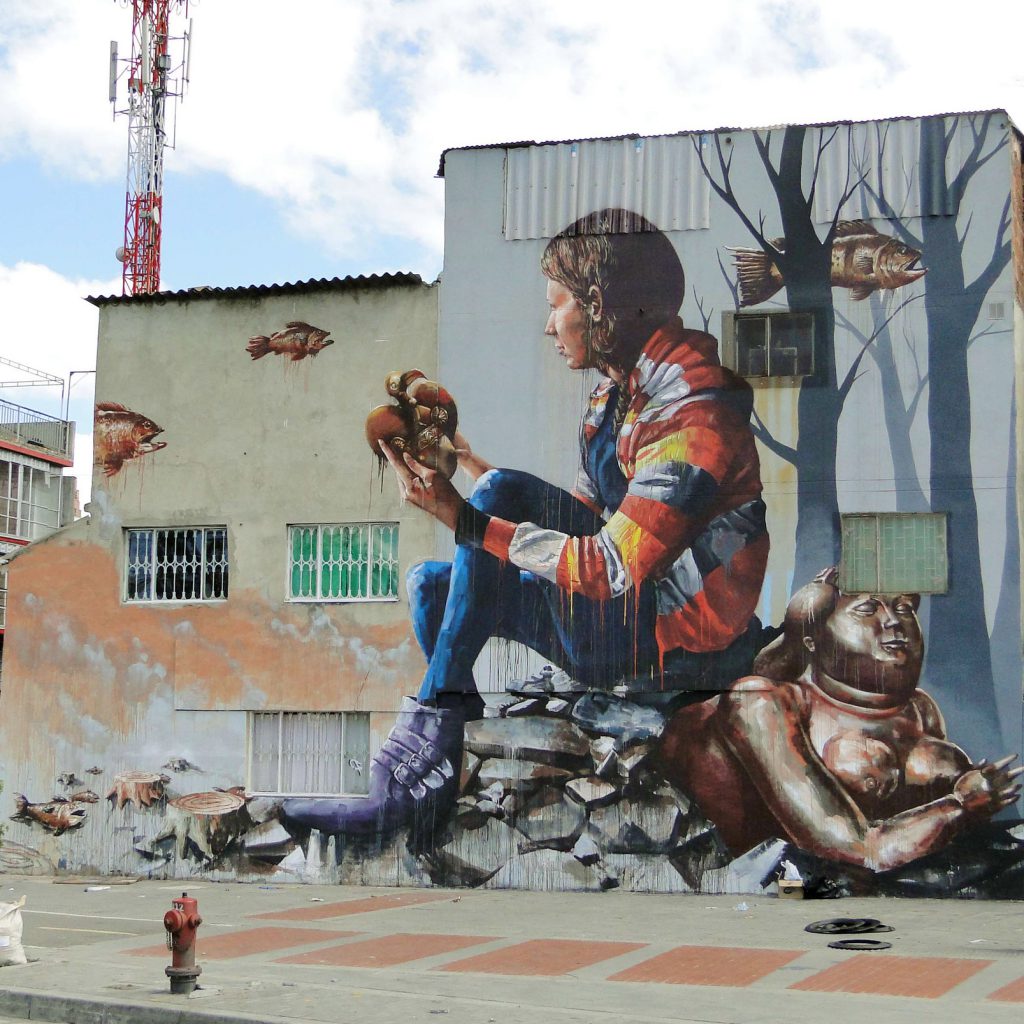
Before the arrival of the Spaniards, the Colombian territory was inhabited by hundreds of ethnic groups with diverse gastronomic customs. Among this diversity, corn was — and still is — one of the most omnipresent ingredients in Colombian gastronomy.
Today, you can find many recipes that feature corn as an ingredient — drinks, entrees, desserts, soups, alcoholic beverages, and savory dishes. Apart from corn, indigenous Colombian cuisine includes various vegetables like tomato, onion, leek, paprika, potato, cassava, and aromatic herbs such as cilantro, parsley, and many others.
This unique food culture with its versatile ingredients has been influenced by the country’s indigenous communities, the Latin and Spanish cuisines, and the African flavors. And as tradition goes, all of these elements are blended into recipes that are often passed down from generation to generation.
Most of Colombia’s culinary gems are found in the capital Bogotá. For the best dining experience in the country, it’s best to embrace the extremes – from high-end to casual and healthy, from fresh to deep-fried.
The variety of callejera or street food is also worth checking out. You won’t regret trying everything from empanadas to truly exotic fruit salads.
So, here are the quintessential Colombian delicacies you have to try when you’re in Colombia.
Bandeja Paisa
Bandeja paisa — bandeja de arriero, bandeja montañera, or bandeja antioqueña — was declared the national dish of Colombia by the government in 2005. It’s native to the Antioquia region, known as the “coffee zone”.
This highly-nutritious meal was originally created to provide farmworkers with enough energy to sustain them throughout the day’s work. Today, it’s a substantial lunchtime meal eaten on special occasions. It consists of rice, plantain, arepa (corn cakes), avocado, minced meat, chorizo, black sausage, and fried pork rinds topped with a fried egg.
Like most traditional dishes, bandeja paisa is subject to a good amount of variations throughout the country. But what remains a fact is that if you like eating large portions or if you’re very hungry, this wholesome food platter will definitely fill you up.
Ajiaco
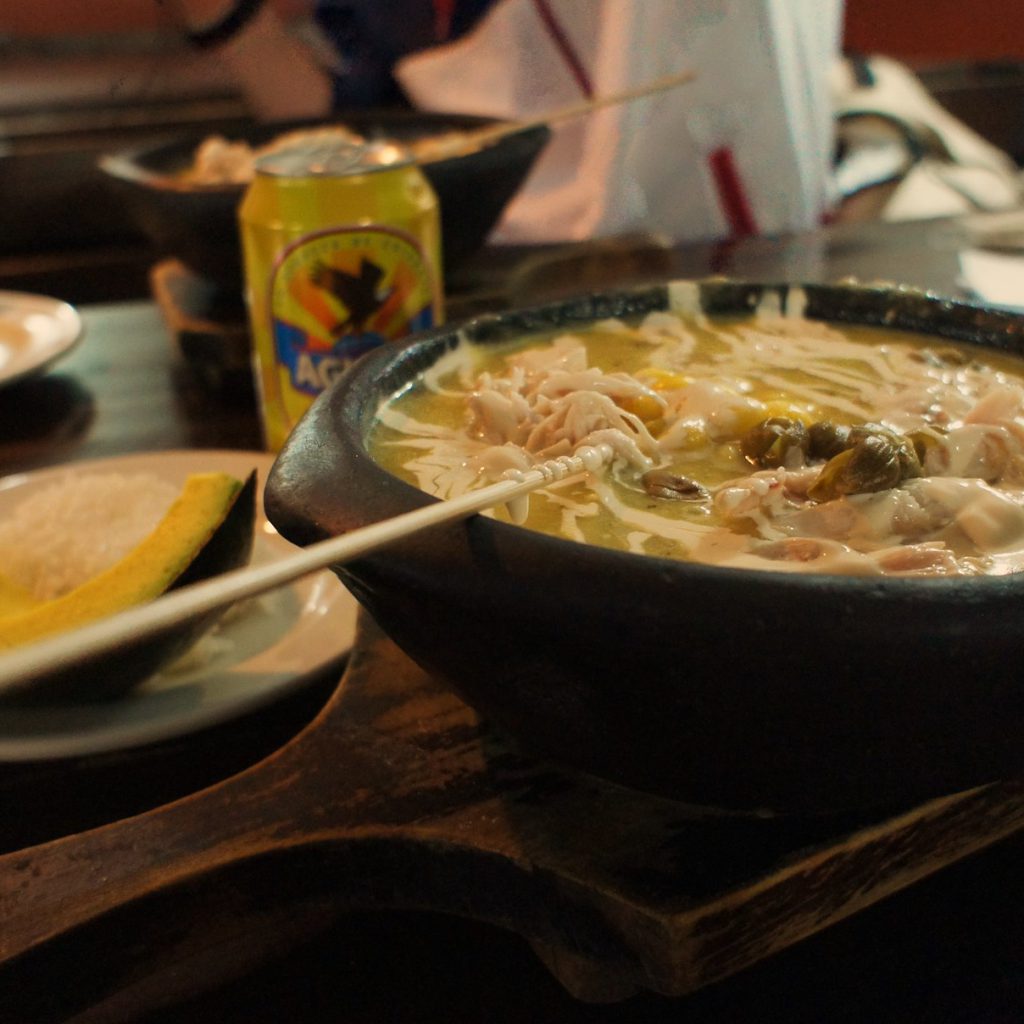
by Cocorrocco
Ajiaco is a hearty soup made from different types of potatoes, chicken, capers, corn, table cream, and guascas — a Colombian herb. The Colombian people grow many different types of potatoes, so the success of this potato-based soup is hardly a surprise.
Ajiaco originates from the Andean region near Bogotá where the climate is colder than the rest of the country. It’s believed that this savory soup originated from the indigenous tribe of Taino, native to the Caribbean Islands, where the same dish is also part of the culinary tradition.
Regardless of its origins, what we know for a fact is that siping ajiaco is like getting a warm and comforting hug on a cold evening in the mountains.
Empanadas
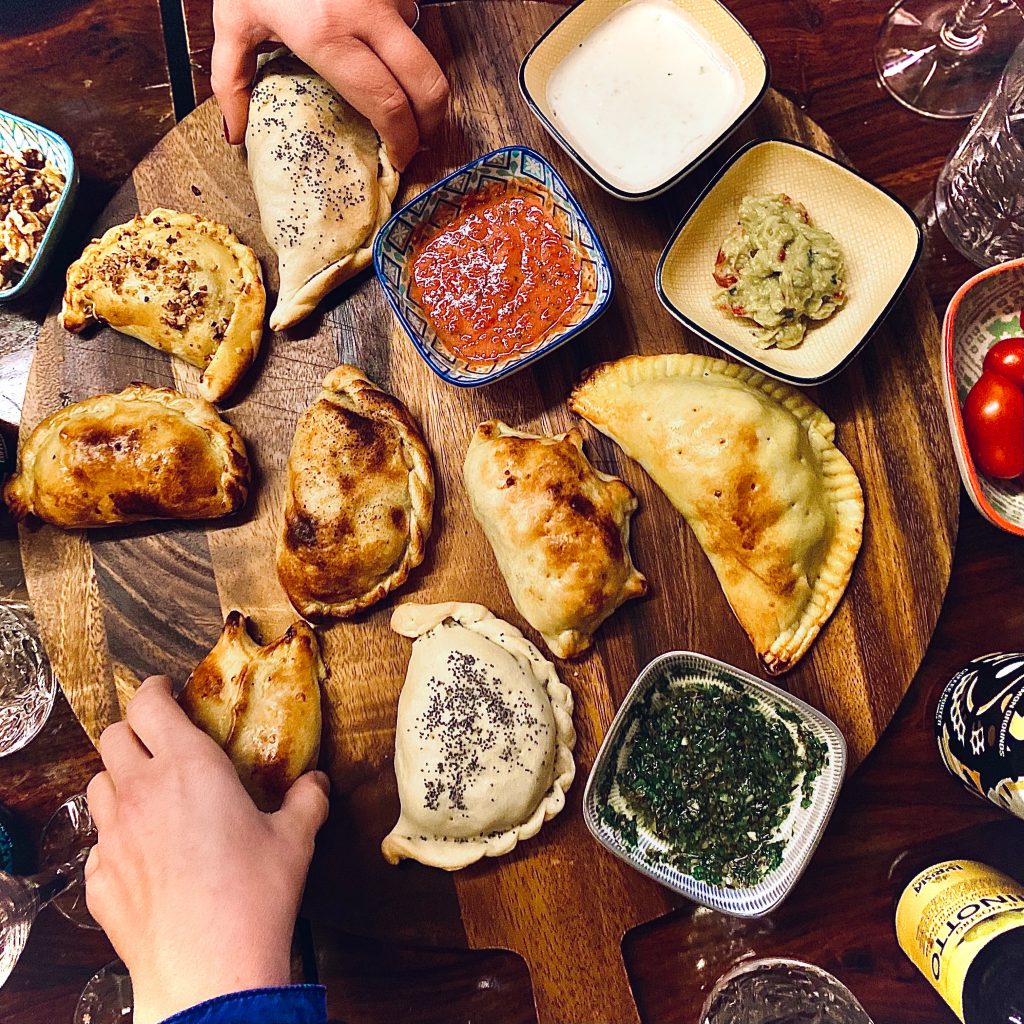
Empanadas are the perfect snack to eat on the go or for a full-blown meal depending on the size and the filling. You can get some from the stalls all over the city, which is why they’re called the “king of the street.”
Similar to an English or a Jamaican pie, these stuffed pastries can be filled with almost anything, but the most popular fillings include meat, chicken, or cheese.
This famous Colombian pastry has made its name overseas as a Colombian delicacy, but the pie’s story dates back to Mesopotamia, from where all wheat-based signature dishes stem in one way or another. For example, gyoza, the Japanese dumplings, share a similar story.
Colombians altered the wheat-based dough with the more traditional corn dough and added local ingredients to the empanadas’ stuffing.
Sancocho
This traditional Colombian stew often includes chicken, pork, fish, or beef. All of the Latin American countries have their own variation of this hearty stew. And even though it looks like a modest soup made of whatever leftovers you could find in your fridge, trust us when we say that it’s worth a try!
Colombians cook sancocho by slowly simmering meat with some starchy vegetables, such as potatoes, green plantains, Andean corn, pumpkin, cassava, or yam, depending on the region, which yields an incredibly tasty and aromatic concoction.
Sancocho is a great way to stretch a couple of small pieces of meat into a savory, healthy meal for a family and it’s comfort food that most of your Colombian friends used to have for lunch at their grandmother’s.
Fritanga
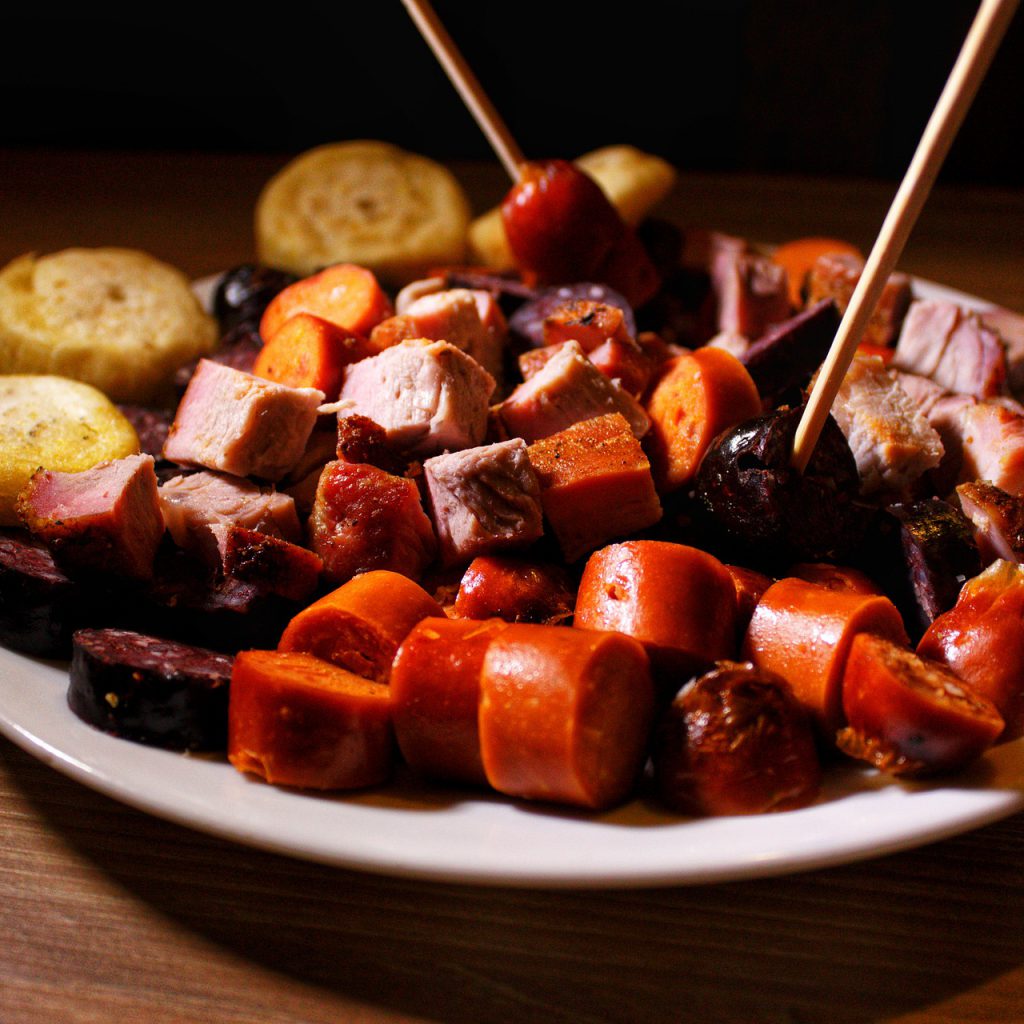
Barbecuing in Latin America is not a new thing. The indigenous people liked to cook meat over smoky wooden embers where the fresh green branches held the meat over the flames. Today, Colombians are no less passionate about barbequing. Only the techniques and ingredients have been elevated.
One of these barbecue stars is fritanga, a wonderful mixture of grilled meat and fried dough. The word fritanga comes from the Spanish word for ‘fried’ – frito. But don’t be misled, not everything is fried in a plate of fritanga. Pieces of various meats are typically grilled, and served with fried dough and plantains, along with cooked beans and rice.
The meat is a combination of chorizo, chicharrón, pork sausage, blood sausage, or even fried pork intestine. It might not be the most appetizing dish for some — it’s definitely an acquired taste — but fritanga is a great way to sample pieces of meat you wouldn’t normally eat.
Arroz con Pollo
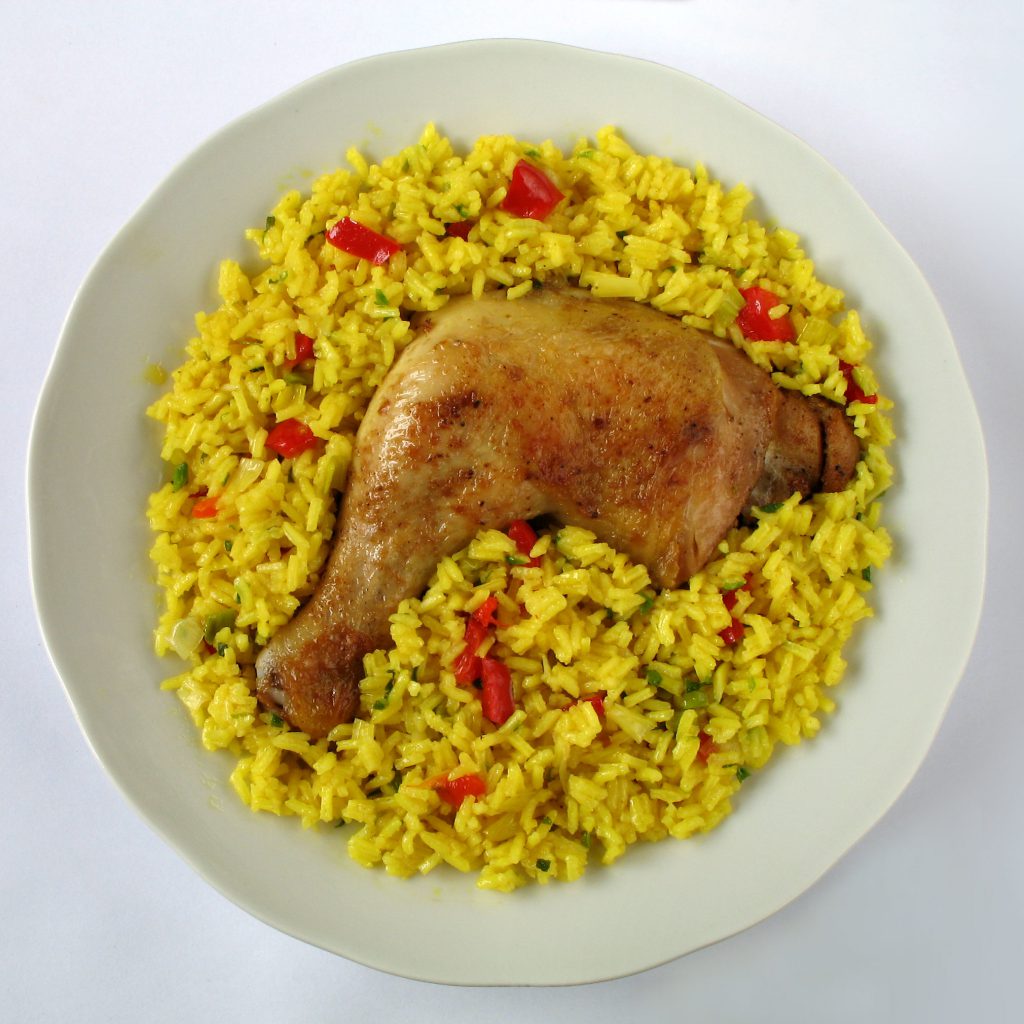
by Oda al arroz
Arroz con pollo is a staple dish on the Iberian peninsula, as you can see in our 15 must-eat foods in Lisbon guide. However, the Colombian version of this go-to dish is a must-try.
To make arroz con pollo, the chicken and rice are stewed together in chicken broth with plenty of Colombian seasoning. The dish is hugely popular and simply delicious. It’s traditionally served with a big squeeze of tomato ketchup, but there isn’t one traditional way of making it. Many different vegetables can go into it depending on the season and the chef’s mood. It’s a very cheap meal that will satisfy the appetite of just about anyone.
Pan de Bono
Pan de Bono is a small, round, bread-like morsel, flavored with sweet cheese. It’s very popular all around the country, and it’s eaten as a snack throughout the day, often served alongside a cup of delicious hot chocolate early in the morning. It’s just like the Spanish churro with a Colombian twist. It’s made of cassava starch, eggs, cheese, and guava jam in some regions. For bread lovers, this Colombian specialty is a treat they can’t afford to miss.
Arepas
Arepas — or corn cakes — are possibly the most famous part of Colombian cuisine. Like empanadas, they’re also made with white or yellow cornmeal, but arepas have no filling. They are also bigger and toastier. You can think of them as super thick Mexican corn tortillas but with cheese.
The history of arepas started in the pre-Hispanic period when corn was considered to be a gift from the gods. Because there were many indigenous groups with their own unique cultures, it’s not surprising that there are over 40 types of arepas in the country. Some are made with eggs, some are both sweet and salty with sweet corn and melted butter, and some include cheese.
Sometimes you can get arepas as a side dish when you order a plate of bandeja paisa. The best thing about these corn cakes is that any time is a good time to have them. You can eat arepas for breakfast, lunch, or even dinner.
Pastel de Gloria
One of the most delicious Colombian desserts, Pastel de Gloria, is a puff pastry filled with guava jelly, cheese, dulce de leche (caramelized milk), or almonds and sprinkled with granulated sugar. They are as tempting as they sound, so much so that they’re sometimes called tetillas de monja — nun’s nipples.
Colombians eat them for breakfast or as an afternoon snack with a Postobón or a hot Colombian coffee. Pastel de Gloria is thought to have Arabic origins. You can find similar deserts in Southeastern Spain, but they are more popular in Colombia than they’re on the Iberian peninsula.
Obleas
This delicious Colombian dessert consists of a waffle-like wafer filled with arequipe, a stuffing like dulce de leche. It’s often topped with spreads like raspberry jam, guava jam, fruits, cheese, or whipped cream. It’s also popular in Spain and other Latin American countries. You can pick your toppings and create your own oblea, just like a waffle. You can find them in most vendors situated on the street corners across the country.
Patacones
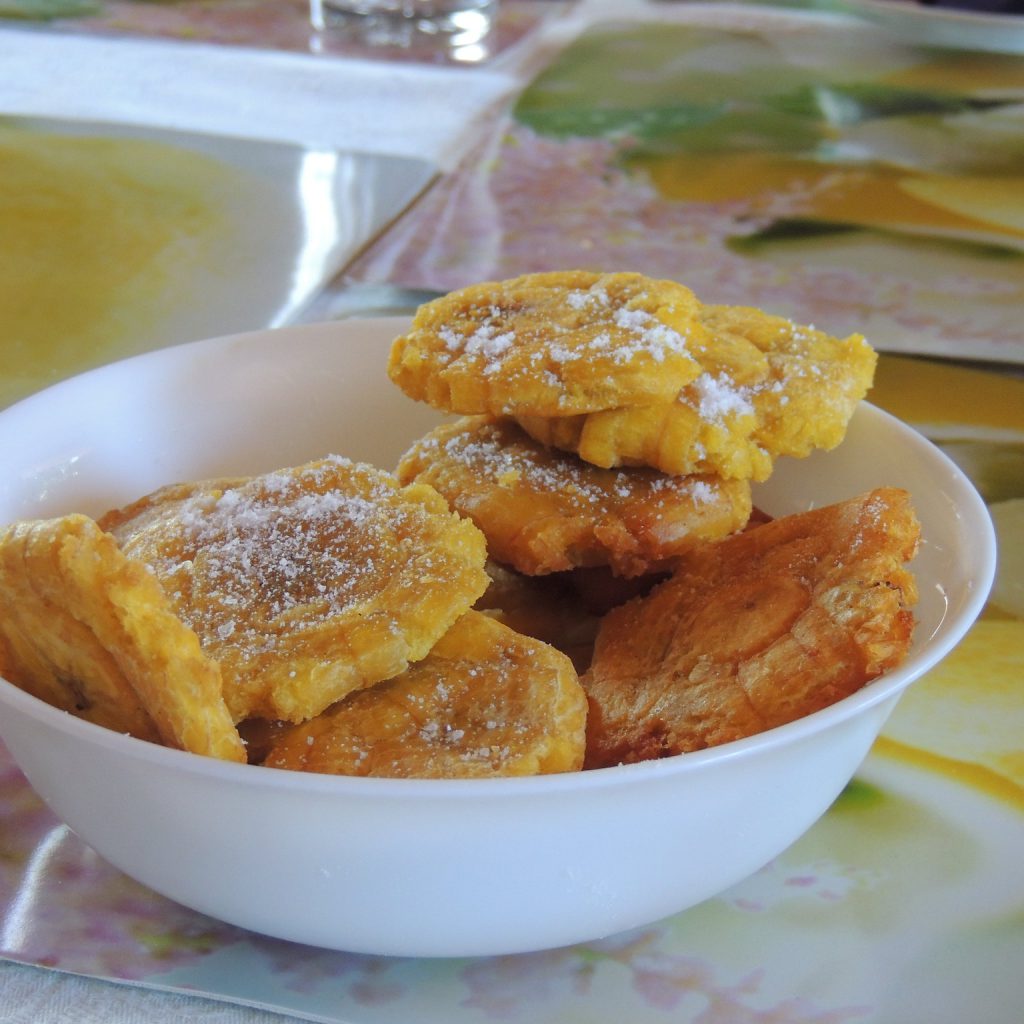
by Silvia Barge
Fried green plantains are popular throughout Latin America. Plantains are basically bananas, but unlike regular bananas, they contain lots of starch which makes them very hard to digest. For this reason, they can’t be eaten raw, but they are very tasty when cooked.
The reason Colombian patacones are so crispy is that they’re double-fried. First, the plantain is cut into pieces, fried, mashed, and deep-fried again until they are golden brown. They’re often served in restaurants as a side dish with meat or fish or as appetizers with aji (hot salsa), hogao (a sauce with tomato and onion), or guacamole. It’s also common to have breakfast with patacones, cheese, and a cup of coffee.
Hot Chocolate with Cheese
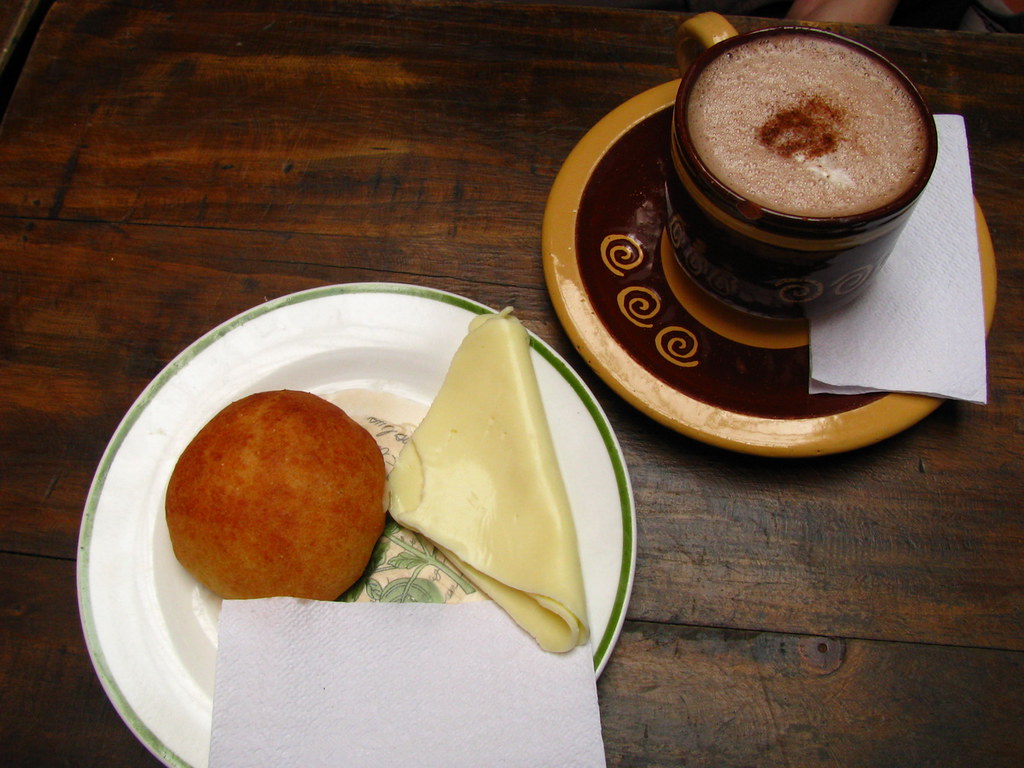
by Ryan
We know you all love a good ol’ cup of hot chocolate and milk, but what about adding some white cheese on top? It might be off-putting at first, but hear us out — the sweet hot chocolate and the salty cheese create an extraordinary drink that tickles your tastebuds. The cheese melts in the steaming chocolate, so it’s best to blow and take little sips or eat it with a spoon. You can take it at breakfast time or a later point in the day as dessert.
Fresh Fruits
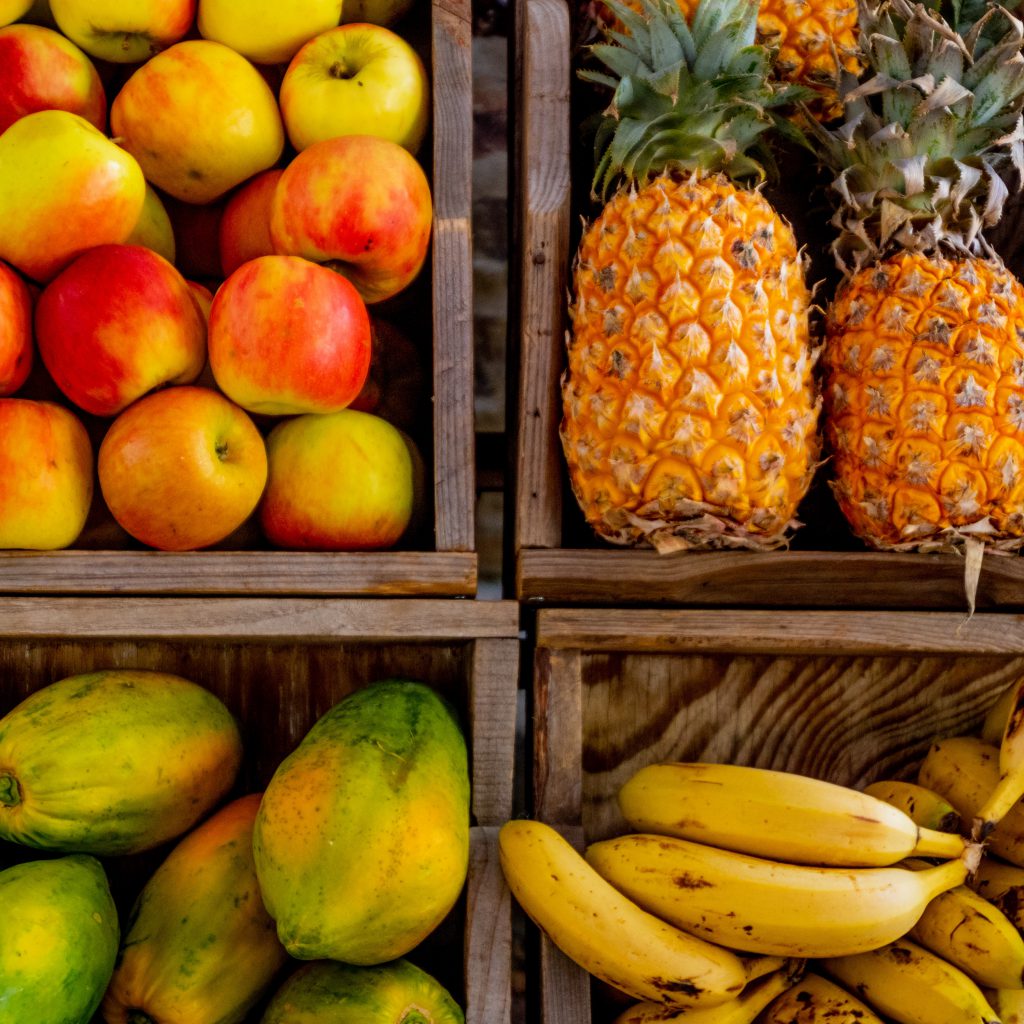
Finally, don’t forget to enjoy the country’s tropical offerings while you’re in Colombia. The fruits found in the markets of Colombia are some of the most memorable in the world. Look specifically for tree tomato (sweeter than a regular tomato and with a hint of kiwi), passion fruit (Colombian passion fruits are definitely enhanced), feijoa (tastes like bubblegum, best mixed with milk for a delicious smoothie), Aruba (like a peach crossed with a strawberry), and the lulo (a tart, tongue-tickling “little orange” often found in cocktails and fresh juices).
Enjoy Your Time in Colombia!
Colombian coffee may be more famous than the food itself, but don’t let that make you overlook the wondrous dishes the Colombian cuisine has to offer. Colombian gastronomy is incredibly versatile, and you can try all kinds of delicacies that you most probably won’t find anywhere else in the world. Colombians are very proud of their cuisine and would happily share their special dishes with foreigners.
To make the most out of your visit, join one of the cooking classes or gourmet tours, such as La macarena gourmet tour in Bogota, the Colombian cooking class and grocery shopping at Envigado’s Local Market, or take a cooking class in a typical Colombian house, where you’ll learn more about the culture, ingredients, preparation, and spend time with friendly locals.


